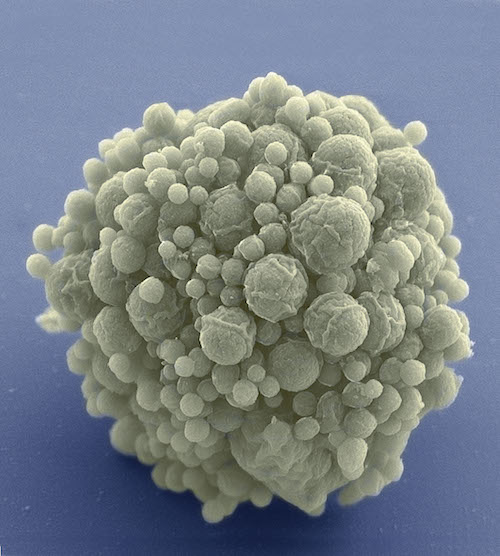 Intelligent Design
Intelligent Design
An Engineered “Minimal” Microbe Is Irreducibly Complex, Thus Evidence of Intelligent Design

Science Magazine published a paper last week, “Design and synthesis of a minimal bacterial genome,” describing the creation of a bacterium with a stripped-down genome. The paper represents twenty years of work by many scientists, including celebrated biochemist J. Craig Venter. They managed to reduce the genome by almost half, from over 900 genes to 473, a little bit at a time. The paper has made a splash across the Internet (see, for example, articles from Associated Press and Bloomberg).
Why on earth would the researchers do such a thing? The hope is that this minimal bacterium will provide a useful vehicle for future synthetic biology, enabling the production of useful medicines to treat disease.
But there is another reason they spent twenty years on this project. It’s an attempt to answer a basic question. What’s the minimum amount of genetic information needed to get a functioning cell? Estimates have ranged from 250 to 300 genes, depending on what kind of cell and where it is living. For the bacterium M. mycoides, the starting point of their work, the answer seems to be about 470 genes. Scientists want to know the answer because the simplified cell may allow them to tease apart how the genes interact, and what all of them do. It’s easier to tackle 400 genes than over 900, or in the case of the common bacterium E. coli, over 4,000.
This work has already yielded some interesting results. They still don’t know what 30 percent of the reduced genome does, just that the genes are essential. Second, genes that appear to be nonessential by themselves can become essential when another gene is deleted. Clearly there are complex interactions going on among the 473 genes.
All of this leads to an obvious question. This little bacterium has to be able to copy its DNA, transcribe and translate it into protein, plus be able to coordinate all the steps involved in cell division. It has to be able to make all the things it can’t get from its environment. That’s a lot of information to be stored and used appropriately. Hence 473 genes.
But where did the cell come from in the first place? It’s a chicken-and-egg problem. Given the number of things the cell has to do to be a functioning organism, where does one begin? DNA or RNA alone is not enough, because protein is needed to copy the DNA and to carry out basic cellular processes. But protein is not enough by itself either. DNA is needed to stably inherit the genetic information about how to make proteins.
Some people propose that RNA could do the trick, because under just the right circumstances, and with an experimenter’s help, RNA can copy itself, partially. The idea is that if just the right sequence of RNA were to come along, it could serve as both an RNA enzyme (or ribozyme) and as the template for reproducing itself.
That leaves aside bigger problems. Ribozymes can only carry out a few simple chemical reactions, while even a minimal cell needs many kind of reactions. Second, how did the switch to DNA and proteins happen? No one has a clue. Last, let’s not forget the problem of interdependence, or irreducible complexity as biochemist Michael Behe calls it in his book Darwin’s Black Box. The minimal cell, he writes, is a system “composed of several [many in this case] well-matched, interacting parts that contribute to the basic function, wherein the removal of any one of the parts causes the system to effectively cease functioning.”
Irreducible systems are evidence of intelligent design, because only a mind has the capacity to design and implement such an information-rich, interdependent network as a minimal cell.
Think about the design of a basic car. You need an engine, a transmission, a drive shaft, a steering wheel, axles and wheels, plus a chassis to hold it all together. Then there’s gas, and a way to start the whole thing going. (I have undoubtedly left out something, but you get my point.) Having one or two of these things won’t make a functioning car. All the parts are necessary before it can drive, and it takes a designer to envision what is needed, how to fit it together, and then to build it.
Whether you’re talking about a car or a minimal cell, it won’t happen without a designer.
Image source: Tom Deerinck and Mark Ellisman, National Center for Imaging and Microscopy Research, University of California at San Diego, via J. Craig Venter Institute.
